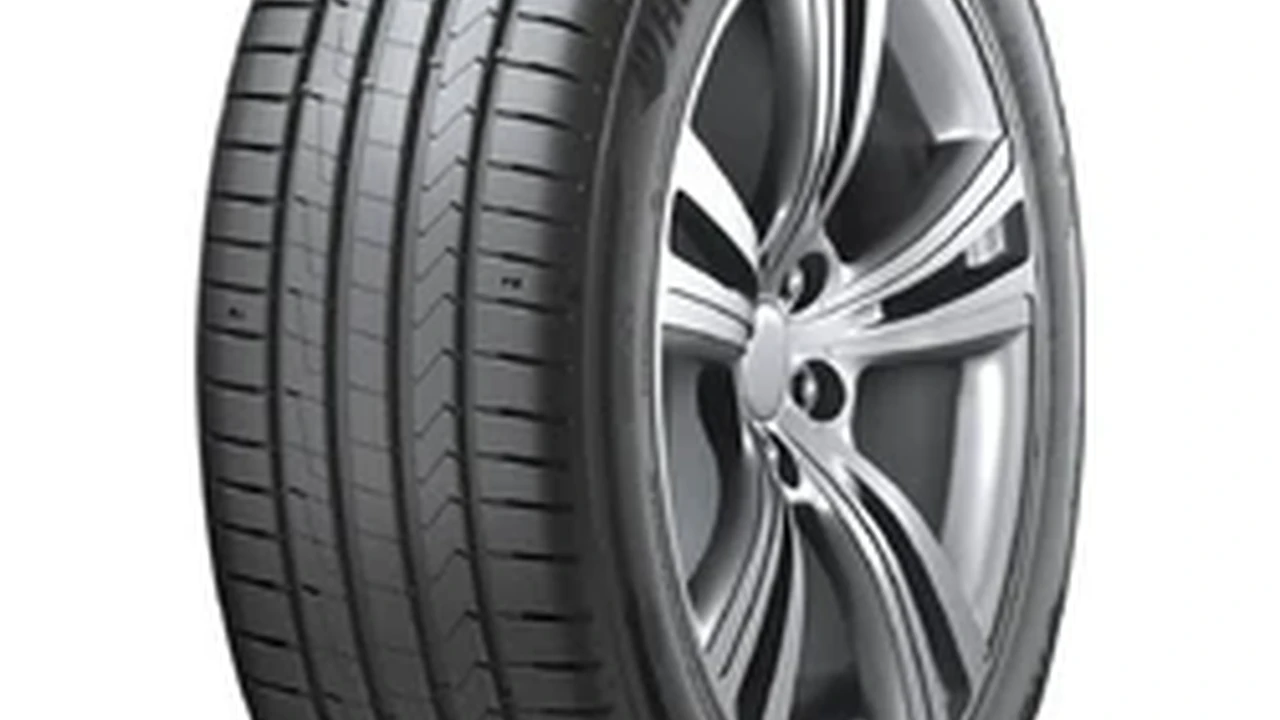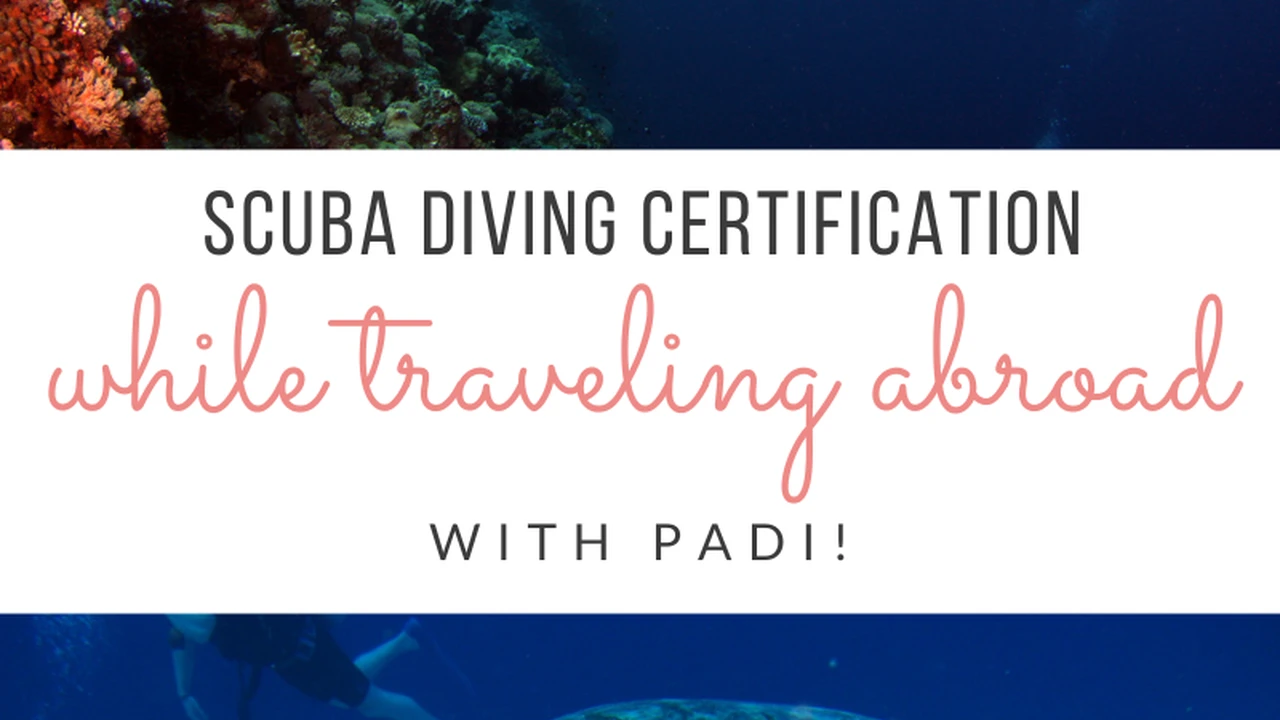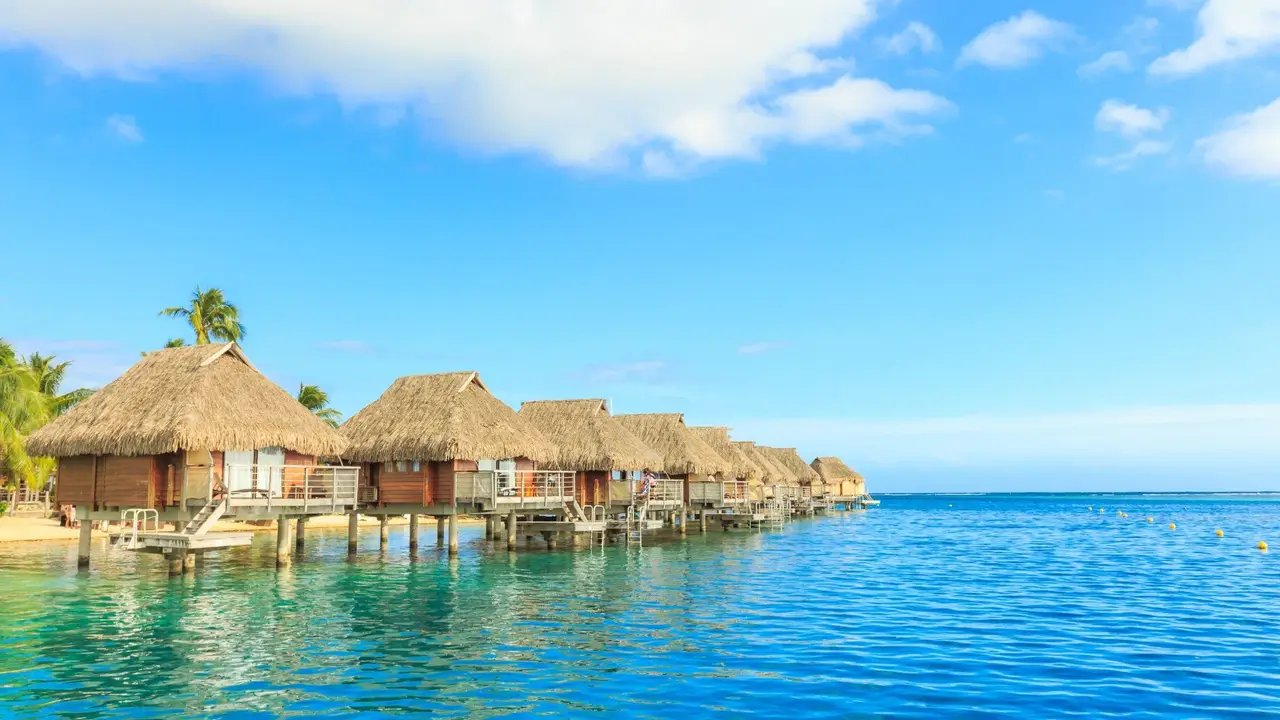Best Scuba Diving Destinations for Marine Life
Uncover the top dive spots renowned for their incredible biodiversity and vibrant marine ecosystems.

Uncover the top dive spots renowned for their incredible biodiversity and vibrant marine ecosystems. If you're a diver whose heart beats faster at the thought of encountering majestic whale sharks, playful dolphins, or schools of vibrant reef fish, then you've come to the right place. This isn't just about seeing fish; it's about immersing yourself in thriving underwater worlds, where every dive is a discovery and every creature tells a story.
Raja Ampat Indonesia A Biodiversity Hotspot
Raja Ampat, located in West Papua, Indonesia, is often hailed as the global epicenter of marine biodiversity. This archipelago of over 1,500 small islands, cays, and shoals surrounding the four main islands of Misool, Salawati, Batanta, and Waigeo, is a true underwater paradise. The sheer variety of marine life here is astounding, with more recorded fish, coral, and mollusk species than anywhere else on Earth. Scientists continue to discover new species in these pristine waters.What makes Raja Ampat so special for marine life? It's a combination of factors: its remote location, which has protected it from overfishing and pollution; its complex currents that bring nutrient-rich waters; and its diverse habitats, including coral gardens, mangroves, and deep-water trenches. Divers can expect to see an incredible array of creatures, from tiny pygmy seahorses clinging to gorgonian fans to massive manta rays gliding gracefully through the water. Reef sharks, wobbegong sharks, barracudas, trevally, and countless species of nudibranchs are common sights. The coral reefs themselves are a spectacle, boasting an unparalleled diversity of hard and soft corals in every imaginable color.
Liveaboards are the most popular way to experience Raja Ampat, allowing divers to explore remote sites that are otherwise inaccessible. Trips typically range from 7 to 14 nights, offering ample time to explore different regions of the archipelago. Expect to pay anywhere from $3,000 to $10,000+ for a liveaboard trip, depending on the duration, vessel luxury, and itinerary. Land-based resorts are also available, though they offer less flexibility in terms of dive site access.
Galapagos Islands Ecuador A Unique Evolutionary Playground
The Galapagos Islands, a volcanic archipelago in the Pacific Ocean, are world-renowned for their unique and fearless wildlife, both above and below the water. This is where Darwin developed his theory of evolution, and it's easy to see why. The marine life here is unlike anywhere else, with a high percentage of endemic species that have evolved in isolation. The cold, nutrient-rich Humboldt Current brings an abundance of food, attracting large pelagic species.Divers in the Galapagos can expect thrilling encounters with hammerhead sharks (often in large schools), Galapagos sharks, whale sharks (seasonal), marine iguanas (the only sea-going lizard in the world), Galapagos penguins, sea lions, and various species of rays. The underwater topography is dramatic, with volcanic formations, lava tunnels, and strong currents that make for exhilarating drift dives. Visibility can vary, but the sheer volume of marine life more than makes up for it.
Liveaboards are almost essential for a comprehensive Galapagos diving experience, as they allow access to the more remote and famous dive sites like Darwin and Wolf Islands, where the big pelagics congregate. A 7-night liveaboard trip can range from $4,000 to $8,000+, excluding flights and park fees. Land-based diving is possible from islands like Santa Cruz, but it limits your access to the most iconic sites.
Komodo National Park Indonesia Dragon Encounters and Rich Reefs
Komodo National Park, a UNESCO World Heritage site in Indonesia, is famous for its Komodo dragons, but its underwater world is equally spectacular. Located in the Lesser Sunda Islands, the park encompasses three large islands—Komodo, Rinca, and Padar—and numerous smaller ones. The strong currents that flow through the park bring a constant supply of nutrients, supporting incredibly diverse and healthy coral reefs and attracting a wide array of marine life.Divers in Komodo can anticipate encounters with manta rays at famous cleaning stations like Manta Point, various species of sharks (reef sharks, grey reef sharks, sometimes even hammerheads), schooling fish like barracudas and trevally, and an abundance of macro life, including nudibranchs, frogfish, and pygmy seahorses. The coral gardens are vibrant and extensive, offering stunning backdrops for underwater photography. Dive sites range from gentle drifts over colorful reefs to exhilarating current dives that require advanced skills.
Both liveaboards and land-based resorts are popular options for diving Komodo. Liveaboards offer the advantage of reaching more remote sites and maximizing dive time. A 7-night liveaboard can cost between $2,000 and $5,000. Land-based options, primarily from Labuan Bajo, allow for day trips to closer dive sites and offer more flexibility for non-diving activities. Day trips typically cost around $100-$150 per person, including gear and lunch.
Palau Micronesia World Class Wreck and Pelagic Diving
Palau, an island nation in Micronesia, is a diver's dream, offering a unique combination of vibrant coral reefs, thrilling pelagic encounters, and fascinating World War II wrecks. Its remote location and strong conservation efforts have preserved its marine ecosystems, making it a top destination for marine life enthusiasts. Palau is particularly known for its strong currents, which bring in large schools of fish and pelagic predators.Key marine life encounters in Palau include large schools of grey reef sharks, white-tip reef sharks, and black-tip reef sharks. Barracudas, jacks, and snappers are often seen schooling in massive numbers. Manta rays are common at cleaning stations, and eagle rays gracefully glide by. For macro enthusiasts, there's a wealth of nudibranchs, mandarinfish, and other small critters. The famous Jellyfish Lake, a marine lake with millions of stingless jellyfish, offers a truly unique snorkeling experience.
Palau offers both liveaboard and land-based diving options. Liveaboards are excellent for maximizing dive time and reaching the most famous sites like Blue Corner and German Channel. A 7-night liveaboard can range from $3,000 to $6,000. Land-based resorts, primarily on Koror, offer daily dive trips to a wide range of sites. Daily dive packages typically cost around $150-$200 per day, excluding park fees and gear rental.
Cocos Island Costa Rica Shark Capital of the World
Cocos Island, a remote, uninhabited island off the coast of Costa Rica, is a UNESCO World Heritage site and a national park. It's often referred to as the 'Shark Capital of the World' due to the incredible abundance of large pelagic species, particularly sharks. Its isolation and the convergence of nutrient-rich currents create a perfect environment for these magnificent creatures.The main draw for divers at Cocos Island is the sheer number of hammerhead sharks, often seen in massive schools. Silky sharks, white-tip reef sharks, Galapagos sharks, and tiger sharks are also common. Beyond sharks, divers can encounter manta rays, eagle rays, whale sharks (seasonal), tuna, and various schooling fish. The underwater topography features volcanic pinnacles, seamounts, and deep walls, providing dramatic backdrops for these encounters. Diving here is for experienced divers due to strong currents and deep dives.
Access to Cocos Island is exclusively via liveaboard. Trips are typically 10 days or longer, given the significant travel time to reach the island. Expect to pay a premium for this remote and world-class diving experience, with 10-day liveaboard trips ranging from $5,000 to $10,000+, plus park fees and flights. This is a bucket-list destination for serious shark enthusiasts.
Specific Gear Recommendations for Marine Life Photography
Capturing the beauty of marine life requires specialized equipment. While many dive centers offer rental gear, investing in your own can significantly enhance your experience and the quality of your photos. Here are some recommendations, comparisons, and price ranges.Underwater Cameras for Capturing Marine Wonders
When it comes to underwater cameras, you have several options, from compact point-and-shoots to advanced mirrorless and DSLR systems. Your choice will depend on your budget, skill level, and desired image quality.Compact Cameras with Underwater Housings
These are excellent for beginners due to their ease of use and relatively lower cost. They offer good image quality for social media and small prints.* **Olympus Tough TG-6:** This camera is waterproof to 50 feet (15m) on its own, but for serious diving, you'll need an external housing. It's known for its excellent macro capabilities and 'microscope mode.'
* **Pros:** Durable, great macro, good image quality for its size, relatively affordable.
* **Cons:** Limited manual controls, smaller sensor.
* **Price:** Camera body around $450-$500. Compatible underwater housings (e.g., Olympus PT-059, Ikelite 200DL) range from $300-$800.
* **Canon PowerShot G7 X Mark III:** A popular choice for those wanting better image quality than a TG-6 without jumping to an interchangeable lens system. It has a larger 1-inch sensor.
* **Pros:** Excellent image quality, good low-light performance, more manual control than TG-6.
* **Cons:** Not waterproof without housing, more expensive.
* **Price:** Camera body around $700-$750. Compatible underwater housings (e.g., Fantasea FG7X III, Nauticam NA-G7XII) range from $400-$1,200.
Mirrorless Cameras with Underwater Housings
Mirrorless cameras offer a great balance of image quality, performance, and size. They are becoming increasingly popular for underwater photography due to their advanced autofocus systems and video capabilities.* **Sony Alpha a6000 Series (e.g., a6400, a6600):** These APS-C sensor cameras offer fast autofocus, good low-light performance, and a wide range of compatible lenses. They are a solid step up from compacts.
* **Pros:** Excellent image quality, fast autofocus, good video, wide lens selection.
* **Cons:** More expensive than compacts, larger system.
* **Price:** Camera body around $900-$1,400. Compatible underwater housings (e.g., Ikelite 200DL, Nauticam NA-A6600) range from $1,000-$2,500.
* **Fujifilm X-T Series (e.g., X-T3, X-T4):** Known for their stunning image quality and color science, Fujifilm cameras are a favorite among many photographers. They offer robust build quality and excellent video features.
* **Pros:** Superb image quality, great color, strong video capabilities.
* **Cons:** Can be pricier, fewer housing options than Sony/Canon.
* **Price:** Camera body around $1,500-$2,000. Compatible underwater housings (e.g., Ikelite 200DL, Nauticam NA-XT4) range from $1,200-$2,800.
DSLR Cameras with Underwater Housings
While mirrorless cameras are gaining ground, DSLRs still offer excellent performance, especially for those who already own a system. They are generally larger and heavier but provide robust controls and long battery life.* **Nikon D850 / Canon EOS 5D Mark IV:** These full-frame DSLRs are professional-grade cameras offering exceptional image quality, dynamic range, and low-light performance. They are ideal for serious underwater photographers.
* **Pros:** Top-tier image quality, robust build, extensive lens selection.
* **Cons:** Very expensive, large and heavy system, less ideal for travel.
* **Price:** Camera body around $2,500-$3,000+. Compatible underwater housings (e.g., Nauticam, Aquatica, Ikelite) range from $2,000-$4,000+.
Underwater Strobes and Video Lights for Vibrant Colors
Natural light diminishes quickly underwater, especially red and yellow wavelengths. Strobes (for still photography) and video lights (for video and focusing) are essential for bringing back vibrant colors and adding dimension to your shots.Underwater Strobes
Strobes provide a burst of light, freezing motion and illuminating subjects with natural-looking colors.* **Inon Z-330 / D-200:** These are compact, powerful, and reliable strobes. The Z-330 is more powerful, while the D-200 is slightly smaller. Both offer wide beam angles and fast recycle times.
* **Pros:** Excellent power, wide beam, fast recycle, reliable.
* **Cons:** Can be pricey, require specific battery types.
* **Price:** $600-$800 per strobe.
* **Sea & Sea YS-D3 DUO:** A popular choice known for its versatility and user-friendly controls. It offers a wide range of power settings and a bright target light.
* **Pros:** Versatile, good power, easy to use.
* **Cons:** Slightly larger than Inon, can be prone to flooding if not maintained.
* **Price:** $700-$900 per strobe.
* **Ikelite DS161 / DS160:** These strobes are known for their robust build and powerful output. They are a favorite among professional photographers.
* **Pros:** Very powerful, durable, good battery life.
* **Cons:** Heavier and larger, more expensive.
* **Price:** $1,000-$1,200 per strobe.
**Recommendation:** For most users, starting with one good strobe like the Inon D-200 or Sea & Sea YS-D3 DUO is a great start. For more advanced users or those shooting wide-angle, two strobes are ideal for even lighting.
Underwater Video Lights
Video lights provide continuous illumination, essential for video recording and for assisting your camera's autofocus in low light.* **Kraken Sports Hydra Series (e.g., Hydra 2500, Hydra 5000):** These lights offer a good balance of brightness, beam angle, and features like red light and UV light modes. They are versatile for both video and focus light.
* **Pros:** Good brightness, versatile features, reliable.
* **Cons:** Battery life can vary with brightness.
* **Price:** $300-$800 depending on lumen output.
* **Light & Motion Sola Video Series (e.g., Sola Video 2500, Sola Video 4000):** Known for their compact size, powerful output, and magnetic charging system. They are very popular among divers.
* **Pros:** Compact, powerful, easy charging, reliable.
* **Cons:** Fixed battery, can be pricey.
* **Price:** $400-$1,000 depending on lumen output.
**Recommendation:** A good video light with at least 2000-3000 lumens is sufficient for most recreational video and as a focus light. For serious videography, consider 5000 lumens or more, or even two lights.
Essential Accessories for Underwater Photography Systems
Beyond the camera and lights, several accessories are crucial for a complete and functional underwater photography setup.Underwater Housing Ports and Lenses
* **Dome Ports:** Essential for wide-angle photography, especially with fisheye lenses. They correct for the magnification effect of water, allowing you to capture expansive reefscapes and large animals. Different dome sizes are available for various lenses.* **Price:** $300-$1,500+ depending on material (acrylic vs. glass) and size.
* **Flat Ports:** Used for macro photography or lenses that don't require a dome. They maintain the lens's focal length and are simpler in design.
* **Price:** $200-$800.
* **Wet Lenses (Macro and Wide-Angle):** These lenses attach to the front of your housing port, allowing you to switch between macro and wide-angle capabilities underwater without opening the housing. They are particularly popular with compact camera users.
* **Nauticam CMC-1/CMC-2 (Compact Macro Converter):** Excellent for super macro, allowing you to get incredibly close to tiny subjects.
* **Price:** $300-$400.
* **Inon UWL-H100 (Wide Conversion Lens):** Great for expanding the field of view of compact cameras.
* **Price:** $300-$400.
* **Price Range for Wet Lenses:** $200-$600.
Trays and Arms for Stability and Positioning
* **Camera Tray:** Provides a stable base for your camera housing and allows you to attach handles and arms for strobes/lights. Look for aluminum trays for durability.* **Price:** $100-$300.
* **Strobe/Light Arms:** These articulate arms connect your strobes or video lights to the camera tray, allowing you to position them precisely for optimal lighting. Ball-and-clamp systems are the most common and versatile.
* **Price:** $50-$150 per arm segment (you'll typically need 2-3 segments per arm).
* **Clamps:** Used to connect arm segments and attach strobes/lights to the arms.
* **Price:** $20-$40 per clamp.
**Recommendation:** Start with a dual-handle tray and two arm sets (e.g., 8-inch segments) for your strobes/lights. This provides good stability and flexibility for lighting.
Cables and Connectors
* **Fiber Optic Cables:** Used to trigger strobes optically from your camera's built-in flash. Most compact and mirrorless housings use this method.* **Price:** $50-$100 per cable.
* **Sync Cords (Electrical):** Used for triggering strobes electrically, typically with DSLRs or more advanced mirrorless setups. These provide a more reliable connection but require a bulkier port on the housing.
* **Price:** $100-$200 per cord.
Float Arms and Buoyancy Aids
Underwater camera systems can be negatively buoyant. Float arms, which are hollow or filled with buoyant material, help offset the weight of your rig, making it easier to handle and reducing strain on your wrists.* **Price:** $50-$200 per arm, depending on size and buoyancy.
Maintenance and Care for Your Underwater Photography Gear
Proper maintenance is paramount to protect your investment and ensure your gear functions flawlessly. Saltwater is highly corrosive, and even a tiny speck of dust on an O-ring can lead to a catastrophic flood.* **Rinsing:** Immediately after every dive, thoroughly rinse your entire camera system (housing, strobes, arms) in fresh water. Submerge it in a rinse tank or bucket for at least 15-20 minutes, operating all buttons and controls to flush out salt.
* **Drying:** After rinsing, gently dry the exterior with a soft, lint-free towel. Pay special attention to crevices and around buttons.
* **O-Ring Care:** This is the most critical aspect. Before every dive day (or even before every dive if you're meticulous), inspect all O-rings for dirt, hair, sand, or nicks. Use a clean, lint-free cloth to gently wipe them. Apply a thin, even layer of silicone grease (specifically designed for O-rings) to keep them supple and create a good seal. Never over-grease, as this can attract debris.
* **Port Cleaning:** Keep your dome and flat ports spotless. Use a lens cleaning solution and a microfiber cloth. Avoid abrasive materials that can scratch the port.
* **Battery Care:** Always use fully charged batteries. Remove batteries from strobes and cameras when not in use for extended periods. Store them in a cool, dry place.
* **Storage:** Store your camera system in a cool, dry place, ideally with desiccant packets inside the housing to absorb any moisture. Avoid direct sunlight or extreme temperatures.
* **Travel:** When traveling, pack your camera system securely in a padded case. Consider bringing spare O-rings, silicone grease, and a small toolkit for minor adjustments.
By following these maintenance practices, you can significantly extend the life of your underwater photography gear and ensure you're always ready to capture the incredible marine life you encounter.
Comparing Different Photography Approaches
Your choice of gear and approach will largely depend on the type of marine life you want to photograph and your personal diving style.* **Macro Photography:** Focuses on small subjects like nudibranchs, seahorses, and tiny crustaceans. Requires a macro lens (or wet macro lens) and precise lighting. Patience and good buoyancy are key.
* **Wide-Angle Photography:** Captures expansive scenes, large animals (sharks, mantas), and reefscapes. Requires a wide-angle lens (often a fisheye) and a dome port. Good visibility and ambient light are beneficial.
* **Close-Focus Wide-Angle (CFWA):** A hybrid approach where you get very close to a subject (e.g., a coral head or a single fish) while still capturing the wider background. This often requires a wide-angle lens and careful strobe positioning.
* **Video:** Capturing motion and behavior. Requires continuous video lights and good stabilization. Many modern cameras excel at both stills and video.
Each approach has its unique challenges and rewards. Many photographers start with a versatile compact system and gradually upgrade as their skills and interests evolve. The most important thing is to practice, understand your gear, and respect the marine environment. Happy shooting.
:max_bytes(150000):strip_icc()/277019-baked-pork-chops-with-cream-of-mushroom-soup-DDMFS-beauty-4x3-BG-7505-5762b731cf30447d9cbbbbbf387beafa.jpg)






